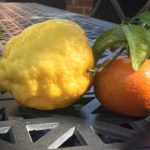
Photos sent by my daughter from Loma Linda, CA became the subject of the latest 6×8 inch Iso-LACE-tion modello this week. Holly and her husband are there for a couple of months, and they were delighted to find fruit trees in the yard where they are staying. I coaxed her to send pictures. It took several tries to get the composition and lighting appropriate for use in a painting, but she did a good job.
Add Excitement with Playful Lively Brushstrokes
As you can see, instead of painting each stitch perfectly, I like to play with the brushstrokes and put lots of character into the lace pattern. Rarely do I follow the rows of the design exactly as it is in the crocheted object. Over to the left where the light enters the scene, vague and dark smudges give just an illusion of uniformity.
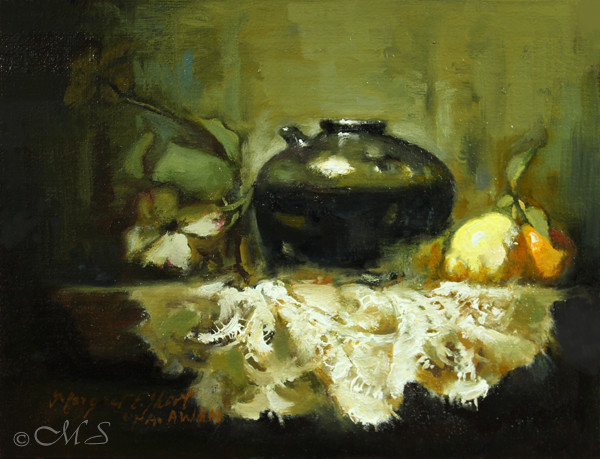
Trompe l’oeil – Magical Illusions
Trompe l’oeil, pronounced tromp loy, is to “fool the eye”. By using this technique, an artist’s intent is to create something so real it tricks the viewer into believing objects or scenes are actually there. You have maybe seen artists who paint startlingly-real chalk images such as pools of water containing sea-creatures on sidewalks, so real you feel as if you are going to fall into the pool and be gobbled up.
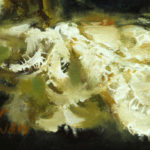
The actual phrase trompe l’oeil originated from the French artist Louis-Leopold Boilly in his Salon painting of 1800. However, there are samples of the technique dating back to ancient Greek and Roman murals.
In this case, Trompe l’oeil is not what I am after, nor is photo-realism. I prefer to leave stitches for the viewer to sew in their own mind’s eye. That said, trome l’oeil is a technique I have employed in the past, which brings to mind a wonderful story.
Magic Trickery on the Studio Wall
Our previous home, where we lived from 1987 to 2007, was a sturdy stucco Craftsman built in 1925. Standing three full floors, counting the basement, it boasted both black walnut and clear-grain fir woodwork throughout.
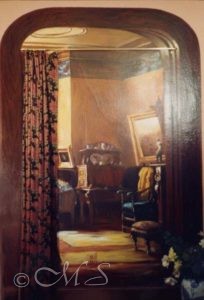
And, none of the woodwork was ever painted over! Upstairs and down the hall from my bedroom-converted-studio was a small but very pleasant room I called my Ivory Tower.
To mitigate the cramped feeling due to the room’s small size, I painted a trompe l’oeil scene on one wall which instantly gave the impression of another room-within-a-room. The woodwork in the scene is painted to replicate the Craftsman style of the house. A curtain rod is attached across the upper part of the doorway with a real hanging Victorian era portiere just to add to the illusion.
You can see the endless tricks that can be created with this trompe l’oeil technique. Children loved to pretend this room was real and make up their own stories. The scene is patterned after a painting by Eastman Johnson, and measures a commanding floor to ceiling size.
Luscious and Juicy
This is part of the magic of painting in oils. Oil paints are versatile, forgiving, luscious, juicy, and readily available for any style or technique you can think of. Tight and perfectly rendered or expressive and free, whatever suits your sensibilities. It’s all magical. I guess you could say Holly and I turned lemons into lemonade!
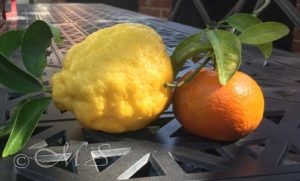
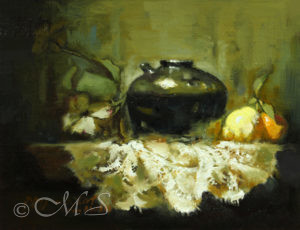

Love the contrast of the black, white and the bright colors of the fruit. Glad you could use my photo of the fruit❤️
Hi Holly, It was fun to collaborate with you on the images. We did make lemonade!